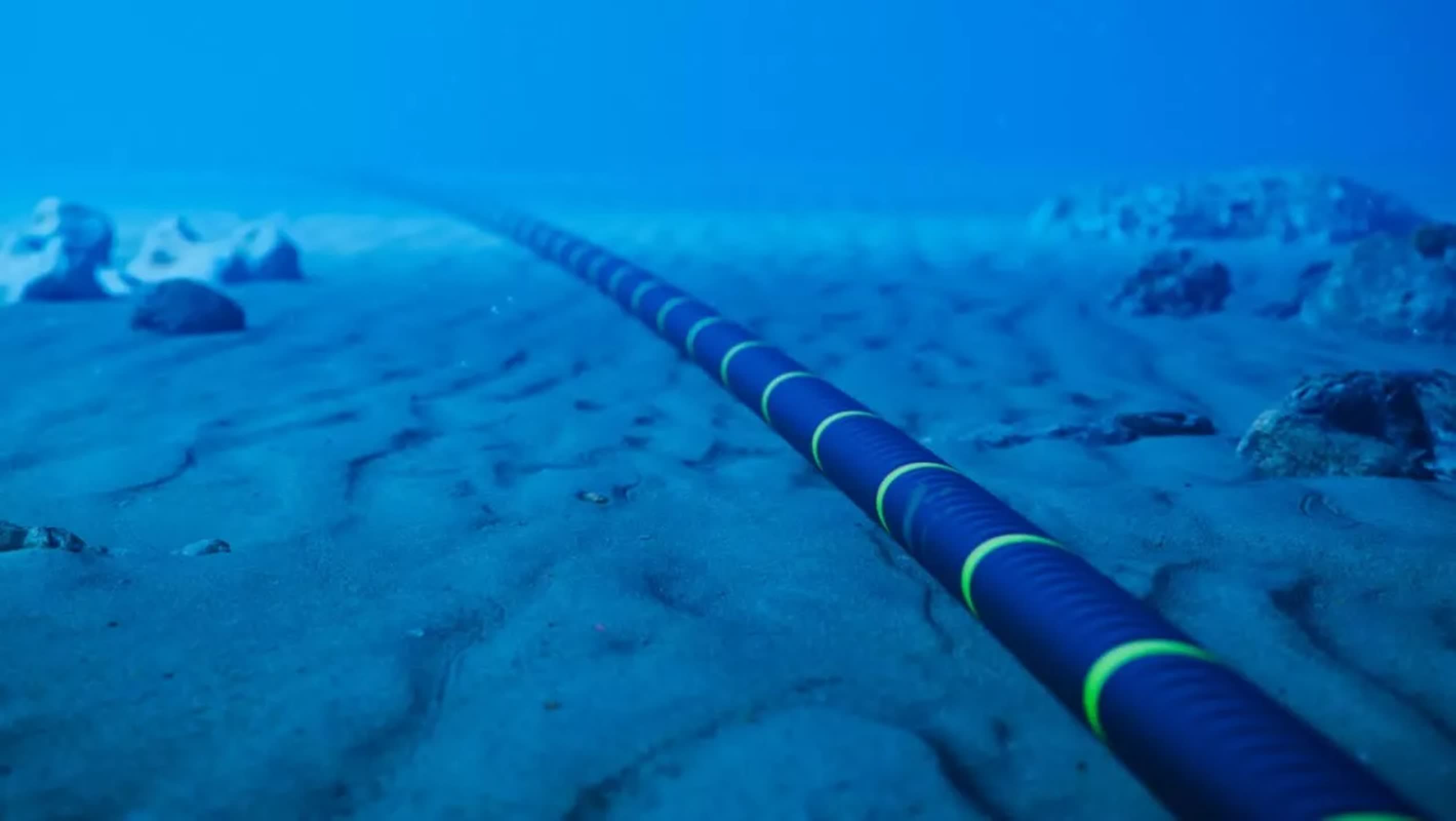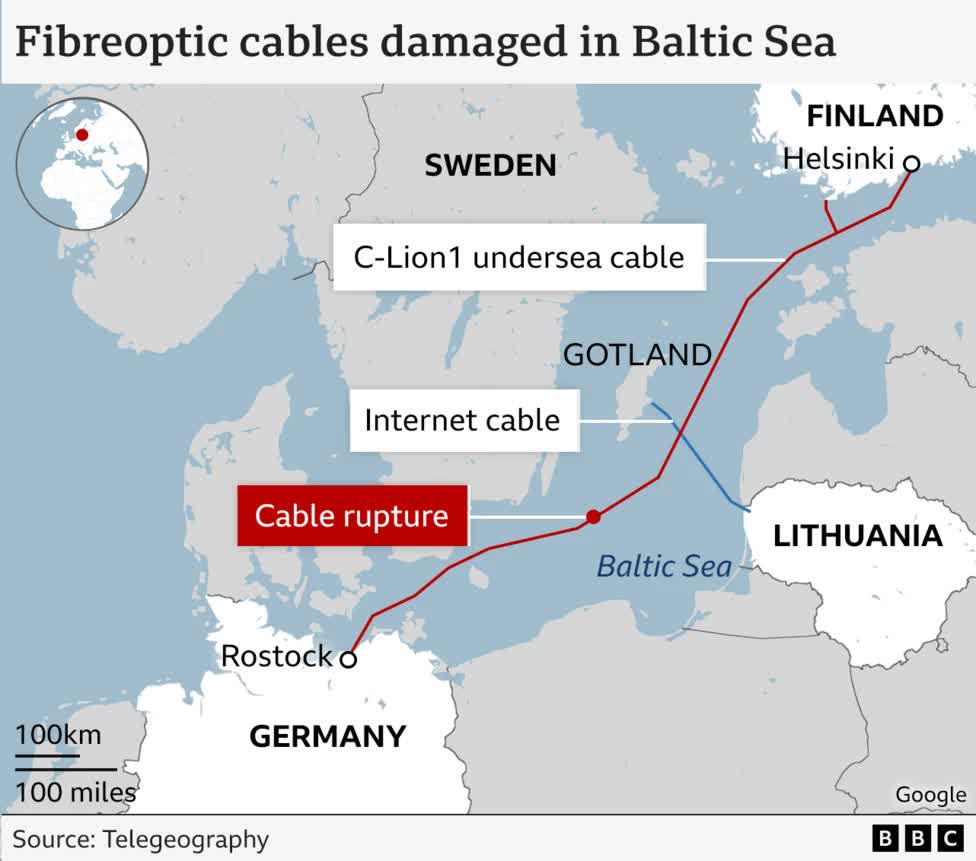What just happened? Sabotaging undersea internet cables has become a common act of aggression in recent times. Following disruption to two of these cables in the Baltic Sea, including one that appears to have been physically cut, it seems the tactic is once again being employed. And there's no prize for guessing the main suspect.
According to a spokesperson from telecommunications company Telia Lithuania who spoke to CNN, a communications cable between Lithuania and Sweden was cut on Sunday morning around 10:00 a.m. local time.
A disruption in traffic led to the company's monitoring system identifying the cut and determining that the cause was likely physical damage to the fiber optic cable itself.
About a fifth of Lithuania's internet capacity has been reduced, though consumers are not believed to have been affected.
Another cable, about 60 miles away, connecting Finland and Germany was also disrupted. The 730-mile C-Lion cable is the only direct connection between Finland and Central Europe. While the cause remains unknown, officials suspect that this was "intentional damage."
Courtesy of the BBC
Finnish telecoms and cyber security firm Cinia said the damage could take 5 to 15 days to repair. The line between Lithuania and Sweden is expected to take a couple of weeks to repair.
The finger of blame is, of course, pointing at Russia. In August, NATO warned that Russia may already have plans in place to target undersea fiber optic cables and scramble GPS signals as retaliation for Western support of Ukraine. There's around 745,000 miles of these cables, which facilitate 95% of global internet traffic.
As reported by the BBC, Germany and Finland have both said they are "deeply concerned" by the severing of the C-Lion1 communications cable, adding that Europe's security is threatened not only by Russia's war, "but also from hybrid warfare by malicious actors."
This isn't the first incident of this kind to take place in the Baltic Sea. In October 2023, a telecommunications cable between Sweden and Estonia was partially damaged. Swedish authorities reported that this occurred around the same time as the rupture of the Balticconnector gas pipeline between Finland and Estonia, during which an adjacent telecommunications cable connecting Finland and Estonia was damaged.

